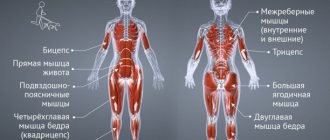Many athletes strive to meet the GTO standard, and more specifically, to run three kilometers in twelve minutes. Both experienced athletes and beginners have a desire to fulfill such standards, however, as a rule, only trained athletes can achieve such a result.
In order to show such an excellent result, it is necessary to conduct regular running training, eat right, lose excess weight, strengthen the body, and give up bad habits.
Runners who set themselves the goal of running three kilometers in 12 minutes need to actively train and develop:
- speed,
- oxygen use efficiency,
- aerobic strength.
Read this article about how to plan your workouts, increase your endurance and speed, and as a result be able to run three kilometers in twelve minutes.
About history and Olympic records
The 3 km race has never been included in the men's competition program at the Olympic Games or the World Athletics Championships. In the case of women, this distance was included in their competition program at the Olympic Games from 1984 to 1996, then it was replaced by a 5 km run without obstacles.
For the first time among the Olympic disciplines, women began running 3 km at the 1984 Games in Los Angeles (USA). Then the Romanian Maricica Puica won, covering the distance in 8 minutes 35.96 seconds. Second place went to Britain's Windy Slee-Smith (8 minutes 39.47 seconds), and third place went to Canada's Lyn Williams (8 minutes 42.14 seconds).
World records
At the first World Championships, when this running distance was included in the competition program, the American Mary Decker-Slaney won, covering the distance in 8 minutes. 34.62 sec., second place was taken by the German Brigitte Kraus (8 min. 35.11 sec.), and third place belonged to the Soviet athlete Tatyana Kazankina (8 min. 35.13 sec.). This world championship was held in the capital of Finland, Helsinki, in 1983, that is, 1 year before 3 km appeared at the Olympic Games.
The very first record that women set when running this average distance belongs to the athlete from the USSR Lyudmila Bragina, who on August 12, 1972 in Moscow ran a distance of 3 km in 8 minutes 53.00 seconds.
Currently, the current record for this distance is the time shown by the Chinese athlete Wang Junxia; on September 13, 1993 in Pyongyang, she ran the distance in 8 minutes 6.11 seconds.
How long does it take men to run 3 km? It is interesting to note that although there has never been a serious world-class men's competition for this average running distance, there is still a world record. It belongs to Daniel Komen, an African runner from Kenya, who showed a time of 7 minutes 20.67 seconds.
Existing standards
Despite the fact that the 3 km distance is not included in the Olympic and world competition programs, standards for it still exist. As part of the training of the youth of our country, in order to receive the 3rd category, men need to overcome this distance in less than 10 minutes. 20 seconds, but if they run it faster than 8 minutes. 55 seconds, then they are awarded 1st category. For girls, the standards for running 3 km to obtain the indicated categories are 12 minutes. 30 sec. and 10 min. 30 sec. respectively.
It is interesting to note that the TRP standards differ significantly from the indicated figures. So, if a man is between 25 and 29 years old, then to earn a gold badge he needs to run 3 kilometers in just 12 minutes 30 seconds. Women do not run this distance, but pass the standards for covering 2 km.
Class standards for women's 3000m running (current for 2020)
| View | Titles, ranks | Youth | |||||||
| MSMK | MS | KMS | I | II | III | I | II | III | |
| 3000 | 8.52,24 | 9.15,24 | 9.58,24 | 10.45,24 | 11.40,24 | 12.45,24 | 13.50,24 | 14.55,24 | 16.10,24 |
| 3000 (pom) | 8.54,24 | 9.17,24 | 10.00,24 | 10.47,24 | 11.42,24 | 12.47,24 | 13.52,24 | 14.57,24 | 16.12,24 |
How to improve your score on three rubles?
The result that an athlete shows when running 3 km depends on a number of factors. Of course, the key point is the athlete’s physical fitness, the level of which increases through correct and rational training programs. However, in addition to physical condition, there are other factors that you need to be aware of.
Firstly, the result on the three-ruble mark depends on how the athlete warms up. During its execution, he should warm up all the muscles well. Since running for three rubles is quite energy-intensive, it is necessary to put the muscles on “combat readiness” in order to increase the efficiency of their work during running, as well as reduce the risk of getting sprains.
Secondly, the physical and emotional state in which the athlete approaches the day of competition is of great importance. This factor is largely determined by planning a training program several days before the competition, taking into account the individual physical qualities of the athlete.
Finally, the result of a 3 km run is closely related to the tactics that the athlete chooses during the run itself.
The fourth stage is proper rest.
When there is a week left before the test, you need to give your body proper rest.
6 days before the start, go to the stadium and run 5-7 segments of 100 meters at the speed at which you are going to run a kilometer.
5 days before the start, run an easy cross-country race of 3-5 km.
4 days before the start, you can warm up without running.
3 days before the start, run 4-5 times 60 meters at a speed slightly faster than you will run 1000 meters.
2 days before the start, run 1-2 times 100 meters at the speed at which you will run a kilometer.
The day before the race, do a light warm-up at home. There is no need to run on this day.
Running tactics
When running at any distance, starting from 2-3 km or more, there are universal tactics that help to achieve maximum results, based on the physical condition of the athlete and his capabilities. This tactic can be expressed in the following formulation: you need to run the distance in such a way that the second half takes less time than the first.
The rule sounds quite simple and clear, but in reality it is difficult for any beginner and even an amateur to follow it. In order to put the correct running tactics into practice, you need to clearly know your strengths and be able to distribute them over the distance. Experts and trainers advise beginners to start jogging at a slow pace and increase their speed as the distance progresses. This is one of the effective methods to find out the capabilities of your body and learn how to correctly distribute forces on a three-ruble note.
Preparing for a 1 km run: increasing the distance
And this is a very important part of preparation. The problem is that it costs nothing for a person to run 1 kilometer, but sometimes the body does not have enough endurance, and the novice athlete himself believes that a whole kilometer is a huge distance. Due to this problem, it is advisable to increase the running distance during training.
Such distances are called crosses, when a person runs without stopping for a long distance. At the same time, it is important for you to understand that chasing speed will not bring any fruit; it will be much more useful to chase distance, the distance traveled. Yes, even if the speed of your running at first will be akin to a step, but the essence of cross-country is that a person covers the entire distance without stopping or taking a step.
What distance should be set in the cross? The question is quite complex and individual, but for a beginner nothing more ideal has been invented than a long distance with a slow running pace. Set the bar: for example, today you need to run 5 kilometers, tomorrow – 6. And again: you don’t need to run at high speed, otherwise you will quit the race without running even a kilometer.
Training program
To successfully meet the 3 km standard, you need to choose the right training program and strictly follow it. Experts recommend the following method of training if there are several months left before passing the standards or competitions: the entire period should be divided into 3 equal parts and left 1.5-2 weeks immediately before the race. These parts are also called training cycles.
In the first cycle, you need to gain basic running training. To do this, you should practice running slowly over a distance of 3 to 10 km. In addition, once a week you need to do strength training for your legs and upper body.
In the second cycle, it is necessary to include interval running in the training program. For example, divide a distance of 6 km into 6 equal segments and run each segment alternating between slow and fast paces.
In the third cycle of the training program, the athlete should add sprint running, that is, develop speed and speed by running distances of 100-200 meters.
When there are 1-2 weeks left before the final race for three rubles, it is recommended to significantly reduce the amount of physical activity in order to give the body sufficient time to rest and recover. For example, strength training and sprint running should be excluded completely, and interval running and distance running should be retained, but performed less frequently (2-3 times a week).
Run properly. Warm-up
Warm-up consists of simple exercises.
1 exercise to warm up before running
Rolling from heels to toes. Then from the outside of the foot to the inside. This way you train your lower leg.
2 exercise to warm up before running
Stretch your arms up and to the side. Stretch your side core muscles.
3 exercise to warm up before running
Run in place, raising your knees as high as possible.
4 exercise to warm up before running
Place your feet shoulder-width apart and turn your body to the left, then to the right. Don't lift your heels off the ground. From the first race, do not try to beat the Olympic results. The load must be increased gradually. Be prepared for some muscle soreness after the first few runs. During the first month it will be very difficult for you to adapt to running. It is during this period that it is extremely important not to quit classes. Keep track of the time. The watch will become a real assistant and substitute trainer for you. By the hour you will increase or slow down your pace. At first, this option is suitable - 10 minutes of fast walking, 5 minutes of light jogging, 2 minutes of very fast running and again 10 minutes of fast walking. Soon you will determine the appropriate training option for yourself. Research your route in advance. It should be safe, calm and uncomplicated. The terrain should be level, without sharp turns or descents. It is advisable that you are not disturbed by people and transport. If you're a little tired of a place, change the route, but not radically. Capture part of the previous route, so you will not feel discomfort in the new area. Choose rhythmic music for your workouts. It should be calm and melodic, preferably without text. You shouldn't be distracted by switching songs.
Special types of running
In addition to the 3K training program described above, there are some specific types of running that can help you achieve better results in the middle distance. First of all, this is running with calf raises for short distances, as well as running uphill and downhill. These types of running develop leg muscles and train the body in anaerobic mode.
General training of the athlete
Since 3 km running is a medium distance run, to achieve good results in it it is necessary to train not only endurance and running skills, but also muscles. Mainly these are the muscles of the lower body and the abs. The best exercises for training your legs are all kinds of jumping variations, such as jumping rope, hip raise, single leg, etc., as well as squats. It is also recommended to combine these exercises within one approach to their implementation.
Abdominal exercises can be performed both in the form of traditional lifting of the torso from a lying position, and lifting the legs from this position.
It must be remembered that 1.5-2 weeks before the start of the race, it is recommended to exclude all general physical activity from training.
This is important to know!
Before any workout and before the race itself, it is necessary to perform a high-quality warm-up. For more information on how to warm up before running, read the article: warming up before a workout.
Don't chase other runners. Keep your pace. If you find a person running at your pace, line up behind him and hold on. Running from behind is easier both psychologically and due to the air corridor it creates.
Eat a carbohydrate meal 2 hours before your race. But not later, otherwise it won’t have time to digest.
If passing the standard is expected in cold weather, then smear the leg muscles with a warming ointment.
In order for your preparation for a 1 km distance to be effective, you need to follow a well-designed training program. In honor of the New Year holidays, there is a 40% DISCOUNT in the training program store, go and improve your results: https://mg.scfoton.ru/
1
Author of the publication
offline 7 months










